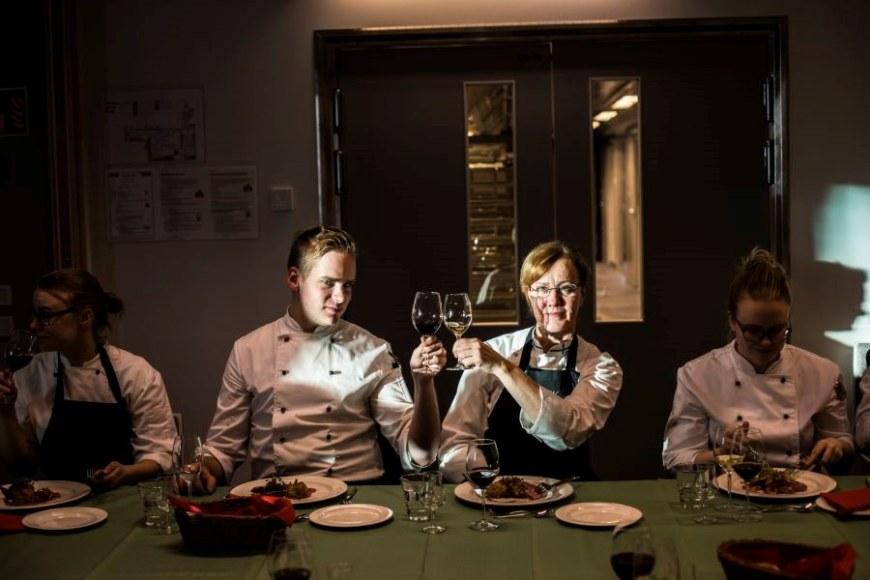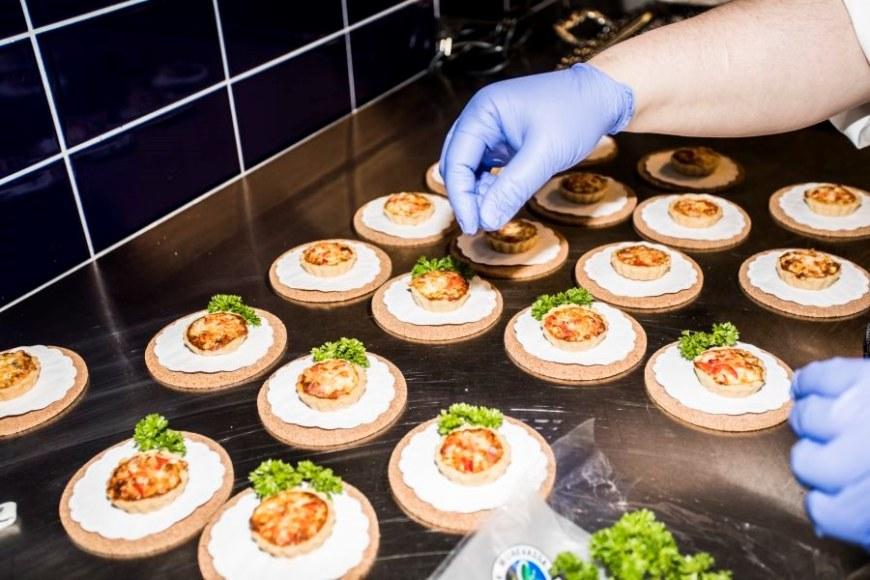Future restaurants compete with service and creativity

This article was originally published in Unit, the magazine of Tampere Universities.
When TAMK’s Senior Lecturer Arja Luiro started her restaurant career at the end of the 1970s, people did not feast on eggplants in the winter and rarely in the summer, either. Many of today’s everyday ingredients, such as fennel and exotic fruits, were rare.
The idea of relaxed chatting waiting staff would have been odd for restaurant patrons in those days. The waiters’ task was to be polite and technically skilful but invisible. In those days, there were just two categories of restaurants: formal dining restaurants with white tablecloths and bars.
Restaurants were also more hierarchical than today. Chefs were responsible for the food, and the headwaiter and waiters for the dining room and wines. There was less communication between the dining room and the kitchen, and teams did not plan the menus.
In 2019, the average Finnish restaurant customer is familiar with several food cultures and is used to finding avocados in the corner shop around the year. They may cook fine dining dinners at home and require active service in restaurants.
Return of root vegetables and silver service
Luiro has seen the same trends occur repeatedly in the restaurant field. For example, silver service ended when the French nouvelle cuisine with its miniature portions came to Finland in the 1980s. In the 1990s, the portions were put together as towers that included flavours from around the world. Today, silver service is making a comeback.
“The chef may come to the table to pour the sauce and introduce himself. The portion can be flamed, sliced and put together under the customer’s eyes,” Luiro says.
Seasonal thinking, domestic root vegetables and traditional preservation methods have also returned. Seasonal thinking and the use of every carcass part used to be common practice in restaurants and homes. Already decades ago, Finnish celebrity chefs Osmo Norha, Veijo Vanamo, Jaakko Kolmonen and Eero Mäkelä promoted local food, and the top chefs of today are doing the same.
“It is interesting to see the return of certain things. For example, canning and fermenting are old preservation methods,” Luiro points out.

Restaurants become worlds of experience
The restaurant field of the future will be characterised by awareness of ethical and sustainability issues, automation and service centeredness.
In Japan, robots are already cooking and serving food to customers. The more kitchens are automated, the more need there will be for ecological energy use. Ethical responsibility concerns the whole food and service chain from production to waste reduction and waste disposal.
Automation is likely to free time for the creation of experiences and the collection and analysis of customer feedback. In the future, more audio-visual technology, such as lights and images, will be used to create the atmosphere.
However, robots cannot replace the service experiences created in human interaction, an aspect that is critical when customers decide whether they will return to the restaurant.
“Present-day customers are quality conscious and they are well-travelled. In the future, more and more options will be available and we cannot afford to lose customers due to bad service,” Luiro explains.
Bachelors of Hospitality Management are multitalented
Before her teaching career, Luiro worked in restaurants for 15 years, most recently as the chef of Myllärit in Tampere. While working, she studied to become a Master of Education and professional special needs teacher and is now teaching hospitality management students at TAMK.
Today’s students are a diverse group. They may have graduated as cooks, waiters, bakers or receptionists from vocational institutions, passed the matriculation examination, or be adult students with varied professional backgrounds.
The requirements of the field have also become more diverse. Students are now learning about work-related equipment, online systems, entrepreneurship, and low-carbon food and production chains. These professionals must master both business thinking and the creation of experiences and understand how their field is connected to the environment and society.
“The students are also boldly searching for their own personal paths. Some are interested in entrepreneurship,” Luiro says.
Students practise entrepreneurship in TAMK’s Catering Studio restaurant where they organise events for which they do everything from planning and marketing to implementation and follow-up. They complete their entrepreneurship studies in cooperation with existing businesses. For example, the students will run the Juvenes cafe at the Hatanpää Manor in Tampere for the second time next summer.
TAMK’s hospitality management graduates are working in several new wave restaurants in Tampere, such as Kajo, Tullin Sauna, and Kumma Junk Bar & Lounge. The Finnish restaurant culture has evolved from white tablecloths to a combination of relaxedness, creativity and international-level cooking.

Future restaurant trends
-
There will be restaurants for every taste.
-
The staff’s interaction skills will become more important.
-
Restaurants will become multisensory experiences.
-
Sustainable development and the low-carbon economy will be emphasised.
-
The use of plant-based foods will increase
Author: Janica Brander






